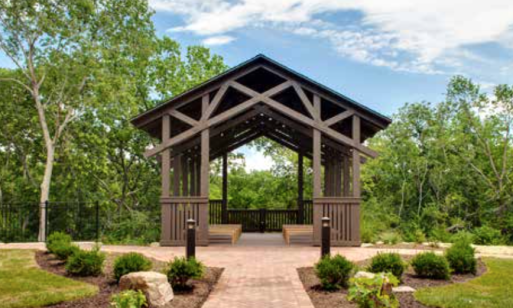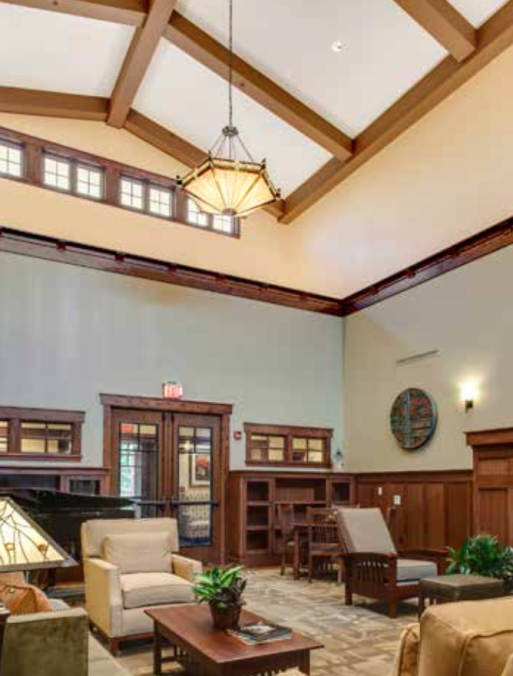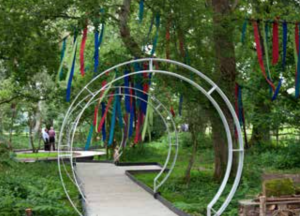
Credit: matrix architects
An example of their vision in process; An outdoor chapel in the woods at St. Luke’s Hospice House to provide a special place for reflection at end of life
It’s those who have a vision to make the world better in some way that drives people; they are determined to make it a reality.
Jay Mahoney is one of those standout people. Now in retirement, Jay, former president of the National Hospice Organization and a hospice consultant, launched the Hospice House Network in 2011 to develop higher quality facility-based hospice care. It’s a virtual community of hospice professionals and experts who have the passion to improve the level of hospice inpatient (including respite) care, along with residential care under one roof. The Hospice House Network also welcomes volunteers with no experience, who possess a genuine desire of the heart to make dying better, both in the physical and medical experience.

Credit: matrix architects
The great room at St. Luke’s Hospice House in Kansas City, MO has all the comforts & beauty of a real home
He calls his concept “Hospice House,” which he designates as a facility offering more than basic hospice or hospital care. They also offer the comfort of a true home. This is especially true for those who are too ill (acute care) to be in their own home during their last months of life. Jay Mahoney’s network brings a national team together to create these hospice facilities. They come together to pool their knowledge and share photos of successful solutions.
Now that Jay Mahoney is in retirement, Larry Beresford has taken over his mission, continuing to push Jay’s vision forward. He is editor-in-chief of the Hospice House Network newsletter “The Flutter.” Larry seeks to do hospice care better, too.
“It was hard to tell people what was necessary in order to do it well – how to look at it with a realistic eye, as opposed to what I’ve referred to as the Busby Berkeley approach to building a hospice facility,” he says. He wants to bring those who are doing it well together with those who desire to do it better.

Credit: chestnut tree house
An example of their possible vision; The Woodland Walk at a children’s hospice in Worthing, Sussex, U.K. with a wheelchair-accessible trail and interactive sensory zones
Only a fifth of the hospices in the US have separate hospice house inpatient care as opposed to in a hospital, assisted living facility or nursing home. There are about 600 hospice house-like facilities in the US, and Larry is not giving up on his dream of high-level comfortable care throughout the country. Yet to implement this on a national level, there are obstacles to work through.
Hospice programs currently provide what’s easiest for them. Plus hospices today are required, by regulations, to document a level of care beyond what is really necessary.
“Now you have to medically prove that the person needs this continuing level of care, and the only way to prove that is by subjecting them to the very medical interventions that we have been trying to get away from since the beginning of hospice. So there is a kind of vicious cycle hospices are caught in.” Larry explains.
He is not giving up. If this interests you, subscribe to the Hospice House Network quarterly newsletter “The Flutter” that Larry oversees. To find out more, or to join in as part of the Hospice House Network, you can email Larry at: larry@hospicehouse.us. We at SevenPonds commend this vision and determination.

 A Vision of Better Hospice Inpatient Care
A Vision of Better Hospice Inpatient Care



 ”The Snow Sister” Directed by Cecilie Askeland Mosli
”The Snow Sister” Directed by Cecilie Askeland Mosli















